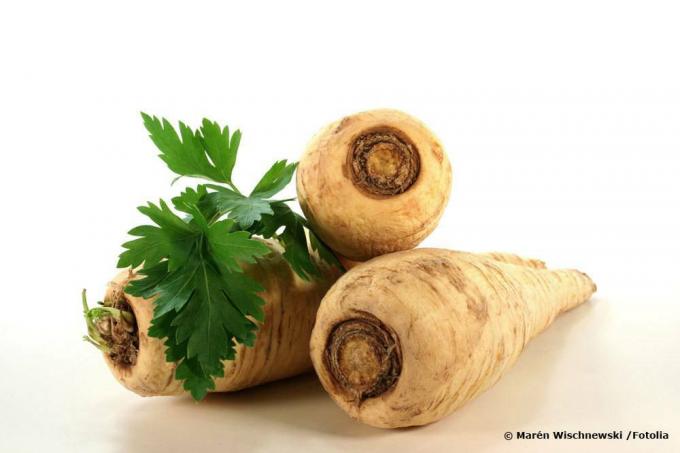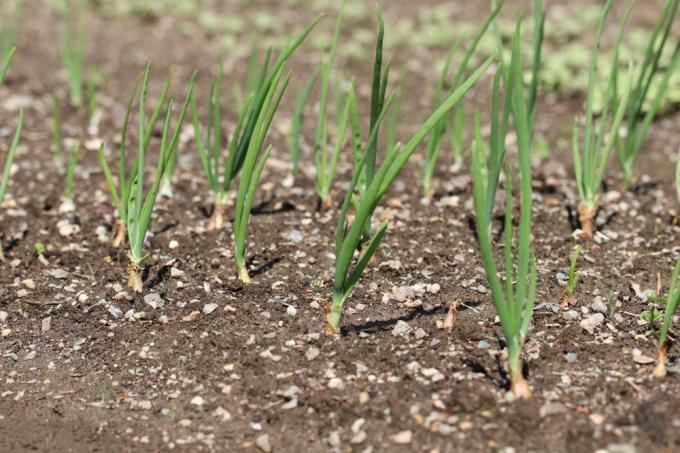
table of contents
- What are winter vegetables?
- Suitable winter vegetables
- Cabbage
- Cabbage varieties from B-G
- Cabbage varieties from R-W
- root vegetable
- Root vegetables from K-S
- Root vegetables from T-W
- Leeks
- More winter vegetables
- Chicory
- potatoes
Winter has always been considered a time of culinary restrictions, as many plants simply no longer grow in the cold and with less sunlight. Even if international trade today means that almost every vegetable is available at any time of the year is available, self-caterers in particular often encounter bottlenecks in the versatility of the in winter Menu. This is remedied by established winter vegetables that have often been forgotten due to the diversity of the international range.
What are winter vegetables?
Winter vegetables are vegetables that, due to their various properties, are ideal for supplying home-grown vegetables during winter. On the one hand, these can be vegetables that are ideal for storage until winter. Other types of vegetables, on the other hand, still grow in the home garden even in autumn and winter and can thus be harvested immediately before consumption. Various vegetables even need a first frost period before they are suitable for consumption.
Suitable winter vegetables
Cabbage
A colorful variety from white to red
The genus Brassica is commonly known to us as "cabbage". It is divided into a large number of species that thrive here and can be grown as vegetables for autumn and winter. However, in terms of appearance, cultivation and later preparation, the various types of cabbage differ considerably. However, all of them are good winter vegetables and at the same time healthy and nutritious. Since the individual vegetables differ primarily in the formation of the aboveground, edible plant components, the requirements for the soil and the locations are usually comparable.
tip: Cabbage varieties love sunny locations and prefer nutrient-rich soils with high moisture.
Cabbage varieties from B-G
cauliflower
- Cultivation / sowing: outdoors from April, in a frost-protected greenhouse from February
- Harvest time: autumn
- Pests: Cabbage white butterfly and cabbage fly, protection by a close-meshed fly net
- Storage: conditionally storable for several days to weeks if stored dry and protected from light
- Consumption: inflorescences in unopened form; Can be eaten raw and cooked, but preferably in cooked form; contains a high proportion of vitamin C and minerals, making it particularly healthy as a vegetable
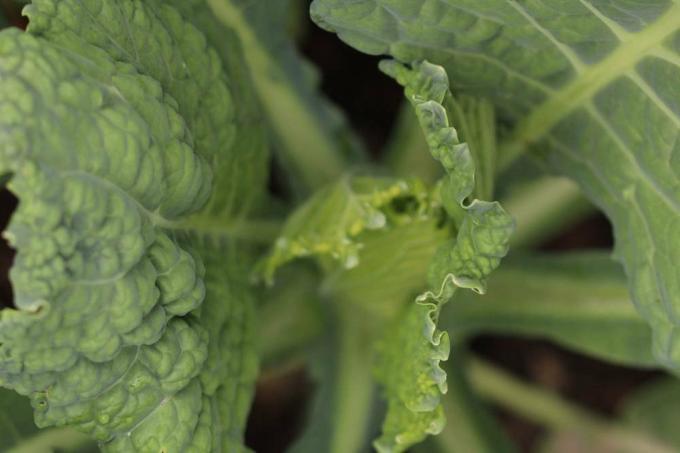
broccoli
- Cultivation / sowing: Depending on the location (outdoors or greenhouse) February to April
- Harvest time: late summer to late autumn
- Pests: earth fleas, vegetable bug, cabbage white butterfly; Protection through a close-meshed fly net
- Storage: stored in a cool and dry place for a few days to a few weeks
- Consumption: inflorescences with developed, but not yet fully opened bud; Can be eaten raw or cooked, contains numerous minerals and other phytochemicals
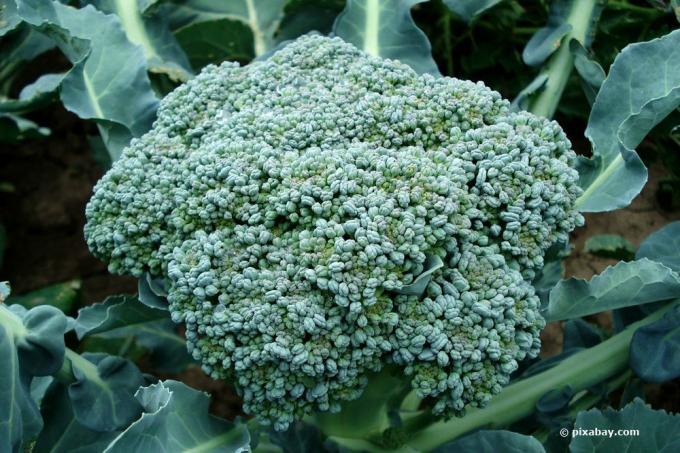
Kale
- Cultivation / sowing: From May in the cold frame
- Harvest time: autumn to winter after the first frost
- Pests: like other head-forming cabbage species
- Storage: only a few days if refrigerated
- Consumption: Leaves cooked as vegetables, high fiber and mineral content
Cabbage varieties from R-W
Romanesco
Romanesco is assigned to the cauliflower, but is actually a cross between cauliflower and broccoli. In terms of cultivation, storage and consumption, it corresponds to the other types of cauliflower and broccoli

Brussels sprouts
- Cultivation / sowing: sowing March to April
- Harvest time: November to December, therefore ideal winter vegetables
- Pests: cabbage white butterfly, aphids, flower flies, disease clubwort; Remedy with a close-meshed fly net or pesticides; Protection against the cabbage white butterfly by the Brussels sprouts themselves by secreting fragrances for predators of the cabbage white butterfly larvae
- Storage: conditional, due to extensive frost hardiness, harvest immediately before consumption
- Consumption: buds in the first year of growth before sprouting after hibernation; cooked, very healthy due to the high potassium and vitamin C content

Red cabbage / white cabbage / pointed cabbage / savoy cabbage
- Cultivation / sowing: spring from the end of the frost period
- Harvest time: early varieties from June, late varieties into December (well suited as winter vegetables)
- Pests: Cabbage white butterfly, aphids, flower flies, remedial action with a close-meshed fly net or pesticides
- Storage: can be stored very well in a cool, dry and dark place
- Consumption: Leaves raw as a salad and in cooked form as vegetables / savoy cabbage only cooked, high fiber and vitamin C content
The color of the red cabbage strongly depends on the pH value of the soil, but also on the later preparation. Because acidic soils or acidic ingredients when cooking cause a strong red color; if they settle in the alkaline area, the color remains bluish to purple. Whereas white cabbage is traditionally used as part of a fermentation process to preserve and produce sauerkraut. Savoy cabbage differs from the other head-forming species in that it has curly, sometimes less fleshy leaves.
root vegetable
Root vegetables are winter vegetables in which the subterranean plant components are consumed. Since these parts of the plant have to be particularly strong, root vegetables are preferred loose and well drained soils with a high proportion of sand. Sufficient moisture is required, at least in the phase in which the root is created. Since the root generally has a storage function for minerals and vitamins in addition to its supply function, root vegetables are generally very rich in nutrients and therefore healthy.
Root vegetables from K-S
celery root
- Cultivation / sowing: By the end of March at the latest as a light germ, i.e. without soil covering the seeds
- Harvest time: until late autumn, but before the first strong periods of frost
- Pests: voles, celery fly; Help with vole traps and fine-meshed fly nets
- Storage: dry, cold and dark for several weeks to months possible
- Consumption: as raw food or cooked, very healthy due to the high potassium content

Carrots
- Cultivation / sowing: all year round after the end of the frost period
- Harvest time: all year round in the frost-free time
- Pests: Yellow-winged aphid, root fly, protection through a close-meshed fly net
- Storage: at temperatures below 2 ° C, as well as dry and dark storage, can be kept for up to several months
- Consumption: Roots as raw vegetables or cooked, high proportion of beta-carotene

Salsify
- Cultivation / sowing: from the end of February to mid-March at the latest, when sown later, the roots are less vigorous and the actual taproot has strong branching
- Harvest time: End of October to April of the following year, therefore ideal as frost-hardy winter vegetables that are always freshly harvested during the entire frost period
- Pests: powdery mildew; Voles; Remedy with pesticides and vole traps
- Storage: only a few days, but hardly necessary due to the high frost resistance
- Consumption: cooked as a vegetable, very healthy due to the high content of potassium, calcium and magnesium

Turnips
- Cultivation / sowing: after the last frost period in spring approx. March April
- Harvest time: autumn through to winter, beets should be harvested and stored before the first hard frost phases
- Pests: earth fleas, cabbage whites, brassicot disease; but generally very robust and resistant to pests
- Storage: at low temperatures, dry and protected from light, possible for up to several months; classic storage variant in underground heaps
- Consumption: Roots in cooked form as vegetables, high content of glucose, vitamins and minerals
Root vegetables from T-W
Jerusalem artichoke
- Cultivation / sowing: February to April
- Harvest time: from November after the shoots have died until March / April, but mandatory before the new tubers sprout
- Pests: very resistant to diseases and pests, powdery mildew occurs often, but is only worth combating in large crops
- Storage: not necessary due to the long harvest time
- Consumption: as raw food or cooked as vegetables, with a high proportion of fiber and minerals
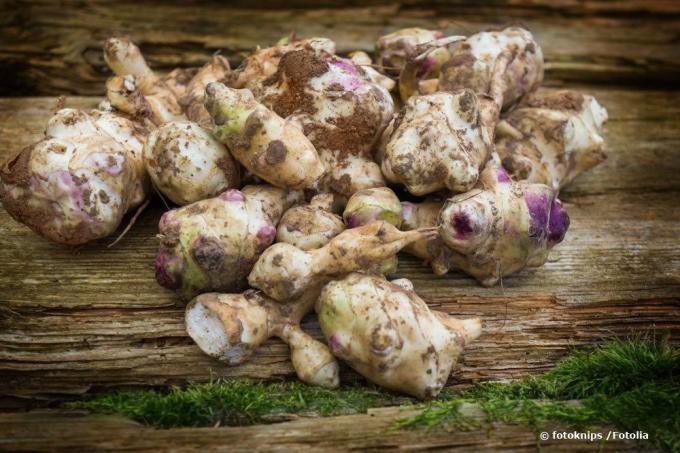
Root parsley
- Cultivation / sowing: March and April with germination in the following 15 to 20 days
- Harvest time: November to December
- Pests: Yellow-winged aphid, root fly, protection through a close-meshed fly net
- Storage: can be stored in an uncleaned form immediately after harvesting, can be stored in moist sand and at temperatures below 2 ° C for up to six months,
- Consumption: raw or cooked, high calcium and vitamin C content
Leeks
leek
- Cultivation / sowing: March to April outdoors
- Harvest time: until winter
- Pests: onion thrips; Protection through close-meshed fly nets
- Storage: not required, as leeks are very frost-resistant and can be harvested throughout the winter
- Consumption: mostly cooked because of the flatulent effect in raw form; contains vitamins C and K, as well as folic acid

Onions
- Cultivation / sowing: March to early April on dry soil
- Harvest time: August to October
- Pests: onion thrips; Protection through close-meshed fly nets
- Storage: dry, cool and dark up to several weeks and months; Onions from seeds are more durable than rearing from onion sets
- Consumption: raw or cooked, can have a flatulence in raw form; contain potassium and calcium
More winter vegetables
Chicory
Winter salad with unusual growth
- Cultivation / sowing: The sowing takes place between May and July, the harvest
- Harvest time: Beet harvest between September and November, actual harvest of the edible shoots throughout winter
- Pests: aphids; Control primarily through pesticides
- Storage: longer storage is not possible, however, due to the fresh shoot in the stored state, it is also not necessary
- Consumption: shoots as a salad, or cooked as a vegetable; high content of potassium, calcium and phosphorus
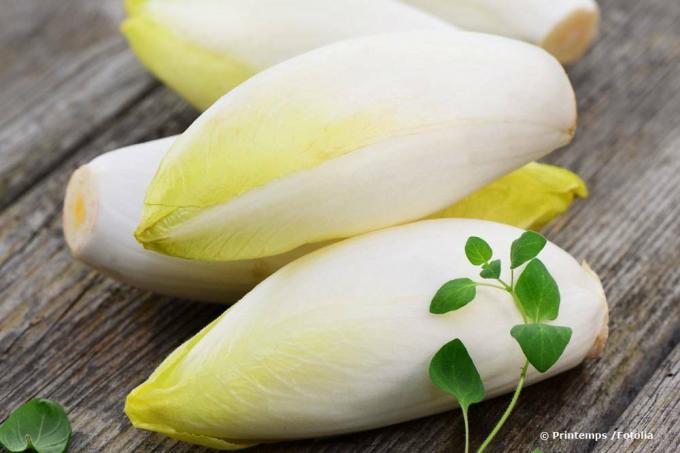
However, chicory cannot be grown in the traditional way like other vegetables. Because after harvesting the edible plant heads, the beets of the chicory plant are stored upright in complete darkness. Thus, at moderate temperatures and high humidity, the beets sprout again within 20-25 days and once again form the well-known, whitish heads with a pointed, dense growth habit. Because chicory is sprouted again in a controlled environment, it is also easy to grow chicory in cellars as a self-sufficiency and is therefore perfectly harvested as fresh winter vegetables directly from the beet. The shoots raised in winter storage appear lighter and have fewer points due to the exclusion of light bitter substances that develop under the influence of light than the conventionally obtained heads during the summer Growth phase.
potatoes
not real winter vegetables, but can be stored for the entire winter period
- Latin name: Solanum tuberosum
- Appearance: herbaceous plant close to the ground with loose leaves and fleshy shoots
- Cultivation: in spring between March and May not sown, but stuck; the potato tuber serves as the basis from which a new plant sprouts.
- Pests: Colorado beetle; Disease of potato blight; Control with pesticides
- Harvest time: August to October after the above-ground parts of the plant have died off
- Storage: Storage at low temperatures, dry and protected from light, possible for many months
- Consumption: Tubers exclusively in cooked form, high content of carbohydrates and minerals
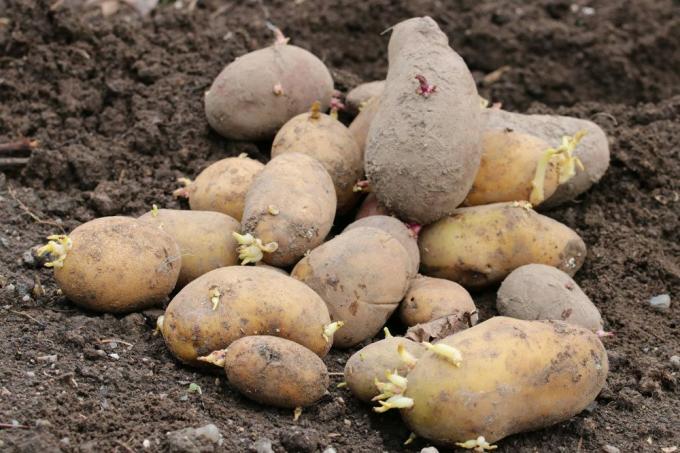
In contrast to other root vegetables, the potato does not form a tuber, but rather the root network is formed into a potato tuber in many areas. The yield per plant of this vegetable is thus far higher than the yield of other, comparable plants.




